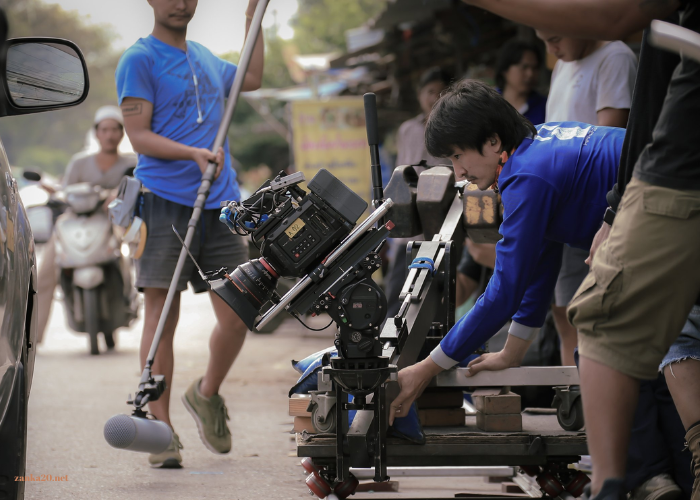In the ever-evolving landscape of entertainment media, cinematic innovations have consistently played a pivotal role in shaping how audiences experience storytelling. From the inception of cinema to the latest technological advancements, the journey of cinematic innovation has been marked by groundbreaking developments that have redefined the boundaries of visual storytelling. This article explores the transformative impact of these innovations on the entertainment industry, focusing on key technological advancements, narrative techniques, and industry shifts that have collectively revolutionized media consumption.
The Genesis of Cinematic Innovation
The origins of cinematic innovation can be traced back to the late 19th and early 20th centuries when pioneers like Thomas Edison and the Lumière Brothers introduced the world to the moving picture. The early days of cinema were characterized by the use of rudimentary film technology, including black-and-white film and silent movies. Despite these limitations, the fundamental concept of capturing motion and telling stories through visual imagery was established, setting the stage for future innovations.
The Advent of Technicolor and Sound
One of the most significant milestones in cinematic history was the introduction of Technicolor in the 1930s. This revolutionary technology allowed filmmakers to produce vibrant, color-rich films, enhancing the visual appeal and emotional impact of their stories. Classic films such as “The Wizard of Oz” (1939) and “Gone with the Wind” (1939) showcased the potential of Technicolor, forever altering the aesthetic experience of cinema.
Simultaneously, the advent of synchronized sound in the late 1920s marked another transformative leap. The release of “The Jazz Singer” (1927), the first significant “talkie,” demonstrated the potential of sound to elevate storytelling. The integration of dialogue, music, and sound effects into films added a new layer of depth and realism, profoundly affecting how audiences engaged with cinematic narratives.
The Digital Revolution: Redefining Visual Storytelling
The late 20th and early 21st centuries ushered in the digital revolution, which brought about a seismic shift in the filmmaking process. Digital cinematography, enabled by advanced camera technology and digital editing tools, transformed how films were shot, edited, and distributed. The shift from traditional film stock to digital formats allowed for greater flexibility, precision, and cost-efficiency in production.
One of the most notable advancements in digital technology is the development of computer-generated imagery (CGI). CGI has revolutionized visual effects, enabling filmmakers to create fantastical worlds, characters, and scenes that were previously unimaginable. Films such as “Jurassic Park” (1993) and “Avatar” (2009) demonstrated the power of CGI to immerse audiences in extraordinary visual experiences, pushing the boundaries of imagination and storytelling.
The Rise of Virtual Reality and Augmented Reality
In recent years, virtual reality (VR) and augmented reality (AR) have emerged as cutting-edge technologies that offer immersive storytelling experiences. VR creates fully immersive environments that allow users to interact with and explore virtual worlds, while AR overlays digital content onto the real world, enhancing the viewer’s perception of their surroundings.
The use of VR and AR in entertainment media has opened up new possibilities for storytelling and audience engagement. For instance, VR experiences like “The VOID” offer users the chance to step into their favorite movies and interact with characters and environments in real-time. AR applications, such as Pokémon GO, have demonstrated the potential of blending digital and physical worlds, creating engaging and interactive experiences for users.
Innovations in Cinematic Techniques and Narrative Structures
Cinematic innovation extends beyond technology and includes advancements in narrative techniques and storytelling structures. Filmmakers have continually experimented with new ways to engage audiences, from non-linear storytelling to interactive narratives.
One notable innovation is the rise of interactive storytelling, exemplified by projects like Netflix’s “Black Mirror: Bandersnatch.” This film allows viewers to make choices that influence the narrative, creating a personalized and interactive viewing experience. Such innovations challenge traditional storytelling conventions and offer audiences a more active role in shaping the story.
Additionally, advancements in cinematography and visual effects techniques have enabled filmmakers to craft visually stunning and emotionally impactful scenes. Techniques such as long takes, complex camera movements, and intricate visual effects contribute to the overall cinematic experience, enhancing the emotional resonance of the story.
The Impact of Streaming Services and Digital Distribution
The advent of streaming services has had a profound impact on the entertainment media landscape. Platforms like Netflix, Amazon Prime Video, and Disney+ have revolutionized how audiences access and consume content. Streaming services offer on-demand access to a vast library of films and television shows, allowing viewers to watch content at their convenience.
The rise of streaming has also shifted the focus from traditional theatrical releases to digital distribution. Filmmakers and studios now have the opportunity to reach global audiences directly through streaming platforms, bypassing traditional distribution channels. This shift has democratized access to content and provided a platform for diverse voices and independent filmmakers to showcase their work.
The Future of Cinematic Innovation
As technology continues to advance, the future of cinematic innovation holds exciting possibilities. Emerging technologies such as artificial intelligence (AI), machine learning, and advanced motion capture techniques are likely to further enhance the filmmaking process and expand the horizons of storytelling.
AI-driven tools are already being used in various aspects of film production, from scriptwriting to visual effects. Machine learning algorithms can analyze vast amounts of data to predict audience preferences, optimize marketing strategies, and even generate new creative ideas. These advancements have the potential to transform how films are conceived, produced, and marketed.
Furthermore, innovations in immersive technologies, such as haptic feedback and spatial audio, will continue to enhance the sensory experience of cinema. These advancements will allow filmmakers to create even more immersive and engaging stories, blurring the lines between reality and fiction.
Conclusion
Cinematic innovations have played a crucial role in transforming entertainment media, shaping how stories are told and experienced. From the early days of silent films to the latest advancements in VR and AI, the journey of cinematic innovation has been marked by technological breakthroughs and creative experimentation.
As we look to the future, the continued evolution of technology and storytelling techniques promises to bring new and exciting possibilities to the world of cinema. The relentless pursuit of innovation will undoubtedly drive the next wave of cinematic experiences, captivating audiences and pushing the boundaries of what is possible in the realm of entertainment media.





Leave a Reply